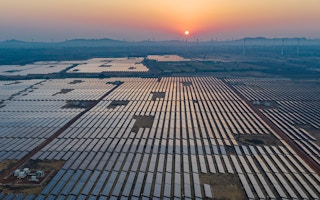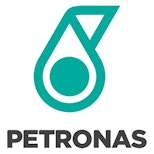With countries and investors increasingly turning to renewable energy, major oil and gas companies such as Shell and BP have announced plans to expand their investments into clean and low-carbon energy.
In Asia, Malaysian state-owned energy firm PETRONAS set up a Gas and New Energy (GNE) division last year, which encompasses the Liquefied Natural Gas, Gas and Power and New Energy businesses. Its New Energy business focuses on renewables, cleaner energy and related technologies such as battery storage systems and electric vehicles.
While the company has invested in solar power projects since 2013, attaining 14 megawatt-peak (MWp) of installed capacity by 2018, it aims to have at least three gigawatts of installed renewable energy capacity by 2024, through renewables unit PETRONAS New Energy.
Dr Jay Mariyappan, head of PETRONAS New Energy, said that its investments will help to future-proof the firm: “We can provide our customers with the solutions they are looking for as they make the transition to cleaner energy. That is why having this division in our company’s portfolio is critical at this time.”
A spotlight on solar
PETRONAS’s first acquisition for the division was Amplus Energy Solutions last year. The Singapore-based solar power company is one of India’s largest rooftop installation providers, and currently has over 800 megawatt-peak (MWp) of solar capacity in operation and under construction in India, Dubai and Southeast Asia. The commercial and industrial installations serve over 200 multinational firms, including Honda, General Electric and Halliburton.
PETRONAS also built on its acquisition to launch a solar energy installations and services firm in Malaysia last year. Called ‘M+ by PETRONAS’, its offerings include on-site and off-site rooftop solar panels, battery storage, hybrid solutions and analytics systems to monitor and reduce energy usage. The company has inked over 50 MWp worth of deals with commercial and industrial customers in the country.
PETRONAS New Energy has other solar power projects in the pipeline. In July, it unveiled a 20-year power purchase agreement (PPA) with supermarket giant Tesco to install, operate and maintain rooftop solar panels on 15 of the chain’s stores in Malaysia.
The PPA, which it signed as part of a joint venture with another solar power provider, is the largest commercial solar PPA of its kind in Malaysia, and will run until 2040. The solar panels will generate about 18 gigawatt-hours of electricity per year, enough to power 804,905 three-bedroom homes, and reduce carbon emissions by 13,624 tonnes annually.
PETRONAS New Energy is also installing rooftop solar panels for shipbuilding and engineering firm Malaysia Marine and Heavy Engineering, and University Technology Petronas, a PETRONAS-owned private university. These will have capacities of 8 MWp and 7 MWp, respectively. “In addition to these and others, we have 70 megawatts of rooftop and ground-mounted projects that we expect to start in early 2021 for key customers in Malaysia,” said Mariyappan.
The road to net zero
While PETRONAS New Energy has focused mainly on solar power projects so far, it is also looking into on-shore and off-shore wind energy opportunities and will close its first deal in the Asia Pacific soon. Amplus has also launched a delivery service business that uses electric vehicles, giving customers in India a cleaner transport option.
Mariyappan said that the division will continue to concentrate on energy-hungry Asia Pacific. The region of 4.3 billion people nearly doubled its energy consumption between 1995 and 2015, and is slated to do so again by 2040, with demand growing at four per cent a year – almost twice as fast as the rest of the world.
“Our target countries are those where the government has given a strong commitment to increasing the share of renewables in the electricity mix, welcomes foreign investors and have the capabilities to execute projects. India is a key market, and we are considering others, like Vietnam,” he said.
PETRONAS has other sustainability objectives. It has pledged to cap its annual greenhouse gas emissions at 49.5 million tonnes of carbon dioxide equivalent by 2024, and is well on its way to achieving this. In the past five years, its yearly emissions have exceeded the cap only once, in 2017. Its emissions totalled 47.4 million tonnes in 2018, and 47.9 million tonnes in 2019.
In October, it became the first oil company in Asia to set a net zero target, declaring that it will become carbon neutral by 2050. Its plan to do so includes reducing hydrocarbon flaring and venting, capturing methane emissions, and optimising production and operations, besides the efforts of the GNE division.
Tengku Muhammad Taufik, PETRONAS’s President and Group Chief Executive, said of the net zero goal: “We are making this commitment to make a positive change, not only to ride the energy transition, but because a fundamental shift is needed, and we want to be part of the solution, for the world that yearns for a path towards a more sustainable future.”









